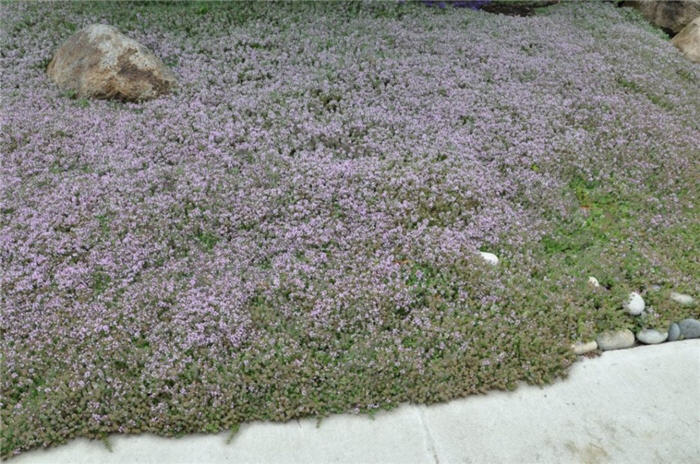| Botanical Name: Thymus 'Victor Reiter' | |
| Common Name: Reiter Creeping Thyme |

-
Anatomy
-
Culture
-
Design
Plant Type
Ground cover, Perennial
Height Range
Under 1'
Flower Color
Lavender
Flower Season
Summer
Leaf Color
Dark Green
Bark Color
n/a
Fruit Color
n/a
Fruit Season
n/a
Sun
Full, Half
Water
Very Low, Low
Growth Rate
Fast, Moderate
Soil Type
Sandy, Clay, Loam, Rocky, Unparticular
Soil Condition
Average, Poor, Well-drained, Dry
Soil pH
Neutral
Adverse Factors
Attracts Bees
Design Styles
English Cottage, Formal, Japanese, Meadow, Mediterranean, Ranch, Seascape, Spanish, Native Garden
Accenting Features
Fragrance
Seasonal Interest
Summer
Location Uses
Entry, Perennial Border, Shrub Border, Parking Strip, Patio, Walls / Fences, Walkways, With Rocks
Special Uses
Cascade, Container, Filler, Mass Planting, Lawn Alternative, Small Spaces
Attracts Wildlife
Butterflies
Information by: Stephanie Duer
Photographer: GardenSoft
Photographer: GardenSoft
-
Description
-
Notes
Reiter thyme is a tough, vigorous groundcover. Forms dense mats that can tolerate foot traffic and choke out most weeds. It grows to 3 inches tall and spreads 30 inches. Rich, olive green foliage is topped with lavender flowers in mid-summer. Faded flowers can be removed using a lawn mower. It has a pleasant, minty fragrance when crushed, though not considered for culinary uses. Attracts bees and butterflies.
Grow in well drained soil in full sun. Adaptive to soil types, but well draining is a must. If using over a large area for a groundcover, plant on 15 to 18 inch centers to ensure that it fills in by the end of the season. Can be mowed after flowering. Low water, deer and rabbit resistant, and low-or-no fertilizer.